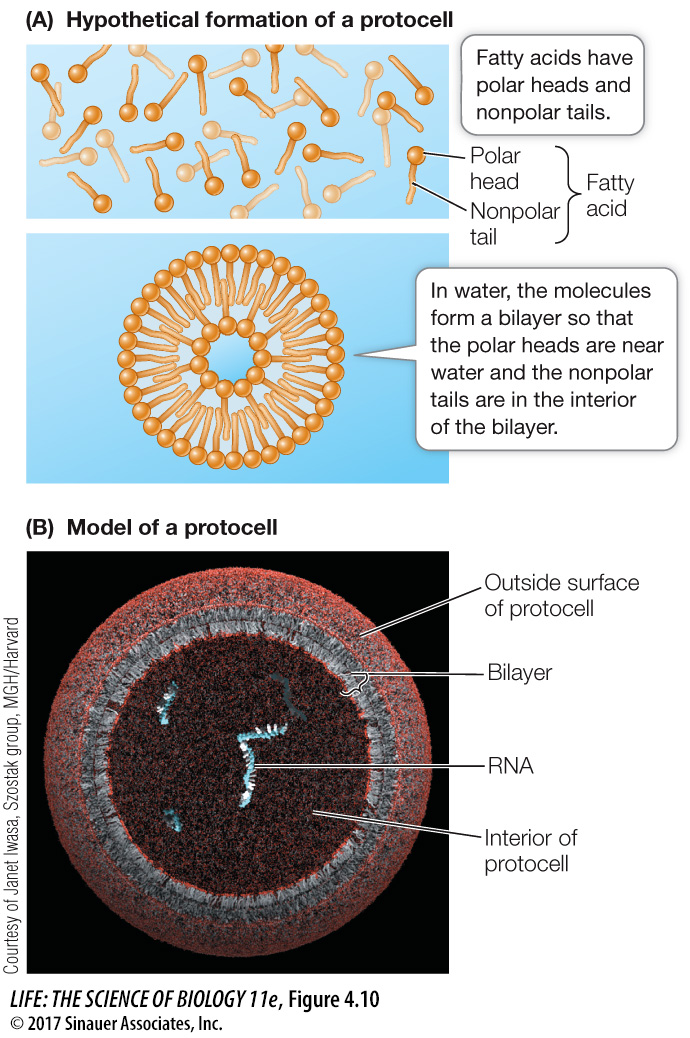How did the first cells with membranes come into existence?
Jack Szostak and his colleagues at Harvard University built a laboratory model that gives insights into the origin of cells. To do this, they first put fatty acids (which can be made in prebiotic experiments) into water. Recall from Chapter 3 that fatty acids are amphipathic: they have a hydrophilic polar head and a long, nonpolar tail that is hydrophobic (see Figure 3.22). When placed in water, fatty acids will arrange themselves in a round “huddle” much like a football team: the hydrophilic heads point outward to interact with the aqueous environment, and the fatty acid tails point inward, away from the water molecules.
What if some water becomes trapped in the interior of this “huddle”? Now the layer of hydrophobic fatty acid tails is in water, which is an unstable situation. To stabilize this structure, a second layer of fatty acids forms. This lipid bilayer has the polar heads of the fatty acids facing both outward and inward, because they are attracted to the polar water molecules present on each side of the double layer. The nonpolar tails form the interior of the bilayer (Figure 4.10). These prebiotic, water-
Large molecules such as DNA and RNA could not pass through the bilayer to enter the protocells, but small molecules such as sugars and individual nucleotides could.
Nucleic acids inside the protocells could replicate using the nucleotides from outside. When the investigators placed a short nucleic acid strand capable of self-
replication inside protocells and added nucleotides to the watery environment outside, the nucleotides crossed the barrier, entered the protocells, and became incorporated into new polynucleotide chains. This replication, which can occur without protein catalysis, may have been the first step toward cell reproduction.

78
Were these protocells truly cells, and was the lipid bilayer produced in these experiments a true cell membrane? Certainly not. The protocells could not fully reproduce, nor could they carry out all the metabolic reactions that take place in modern cells. The simple lipid bilayer had few of the sophisticated functions of modern cell membranes. Nevertheless, the *protocell may be a reasonable facsimile of a cell as it evolved billions of years ago:
It can act as an organized system of parts, with substances interacting and reacting, in some cases catalytically.
It includes an interior that is distinct from the exterior environment.
It is capable of limited replication.
These are all fundamental characteristics of living cells.
*connect the concepts Protocells more closely resemble bacteria than plant or animal cells. The evolution of the latter two cell types is believed to have occurred in a series of steps, as explained in Key Concept 26.1.